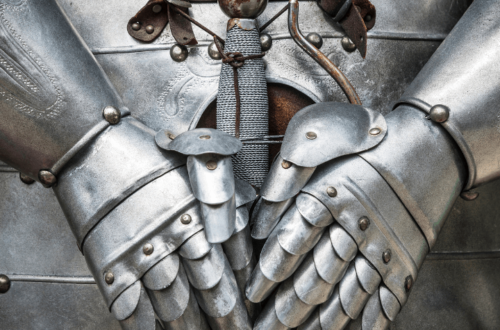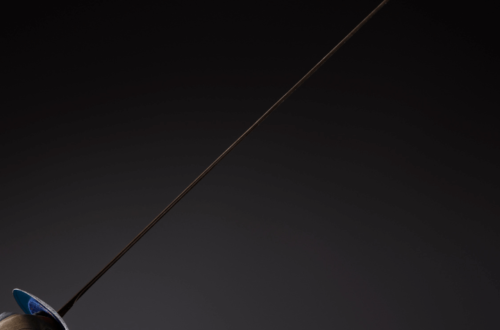-
Must Have Fencing Gear
Fencing is a sport that dates back centuries and has evolved into a modern athletic competition. Fencing involves two competitors using specialized weapons to score points by striking their opponent while avoiding being struck themselves. To participate in this exciting sport, it is essential to have the right equipment. This article will discuss the must-have fencing gear for anyone interested in this unique and challenging sport.
Basic Fencing Gear
The basic fencing gear includes the fencing mask, jacket, glove, and pants. For fencers at all skill levels, certain equipment is indispensable. The fencing mask shields the face and eyes from potential harm caused by the fencing weapon, while the jacket, fashioned from sturdy material, safeguards the upper torso. The glove is designed to protect the hand that holds the weapon. The pants are also made of durable fabric and protect the lower body.
Fencing Weapons
There are three primary types of fencing weapons: foil, epee, and saber. The foil is a light, flexible weapon designed for thrusting attacks. The epee is a heavier weapon that is also designed for thrusting attacks. The saber is a lightweight weapon that is used for slashing attacks. Every weapon boasts its distinct features and attributes, making it crucial to select the one that best aligns with your individual style and preferences.
Advanced Fencing Gear
For more advanced fencers, there are additional pieces of gear that can enhance performance. Body cords connect the weapon to the electric scoring equipment, allowing for more precise scoring. Electric scoring equipment is used in competition to detect when a fencer has made a successful strike. Fencing shoes are also designed specifically for the sport, providing stability and support to the foot during the intense movements and footwork required in fencing.
Protective Gear
Protective gear is essential for any fencer, as it can help prevent injuries and enhance performance. Chest protectors are worn by female fencers to protect the chest area. Knee pads can help prevent knee injuries, which are common in fencing due to the high movement and lunging. Fencing bags are also essential gear, allowing fencers to transport and store their equipment safely.
Choosing the Right Fencing Gear
Choosing the right fencing gear is essential for optimal performance and safety. When selecting gear, consider your level of experience, preferred weapon, and the fit of the equipment. Fencing gear should fit snugly but not be too tight or restrictive, which can hinder movement and cause discomfort. Taking into account the composition and excellence of the equipment is vital, as these factors can influence its longevity and performance.
Maintenance and Care
Proper maintenance and care of fencing gear is crucial for its longevity and effectiveness. After each use, gear should be wiped down with a clean, damp cloth to remove sweat or debris. Masks should be washed regularly with soap and water and left to air dry. Fencing jackets and pants should be washed according to the manufacturer’s instructions. Storing equipment in a cool, dry environment is crucial to avoid harm caused by humidity or high temperatures.
Where to Buy Fencing Gear
There are various options for purchasing fencing gear, including online retailers, sporting goods stores, and specialty fencing shops. As you acquire equipment, conducting thorough research and examining reviews is crucial to guarantee that you invest in top-notch gear from a dependable supplier.
Conclusion
Fencing is a unique and challenging sport that requires specialized equipment to participate safely and effectively. The must-have fencing gear includes the fencing mask, jacket, glove, pants, and the appropriate weapon for your style. Additional gear such as body cords, electric scoring equipment, and fencing shoes can enhance for more advanced fencers.
-
The Evolution of Armored Combat: From Knights to Tanks

Armor has always played a crucial role in warfare. From the medieval knights donning chainmail to the modern-day tanks equipped with advanced weaponry, armored combat has come a long way. The evolution of armor technology has not only transformed the battlefield but also shaped military tactics and strategies for centuries to come. In this blog post, we will delve into the fascinating journey of armored combat and explore how it evolved from knights on horseback to mechanized tanks on the front line. So fasten your seat belt (or rather, your armor) as we take you through this enthralling ride!
Introduction to Armored Combat
The art of armored warfare has changed dramatically since the days of knights in shining armor. The technologies used in modern armored combat vehicles are a far cry from the simple horses and metal armor of yesteryear. In this article, we will take a look at the evolution of armored combat, from the early days of knights to the modern tank.
The earliest examples of armored combat can be found in ancient Sumeria and China, where soldiers used leather or wooden shields and armor made from animal bones or scales. These early forms of protection were effective against blunt weapons, but did little to stop arrows or spears.
The first major breakthrough in armored combat came with the development of metal armor. The use of metal plates allowed for much better protection against arrows and spears, and also made it possible to deflect blows from swords and axes. Metal armor quickly became standard equipment for soldiers across Europe and Asia.
The next major innovation in armored warfare came with the invention of gunpowder. Guns and cannons allowed for a whole new level of destruction, making short work of even the most heavily-armored targets. However, guns were also very vulnerable to fire, so many armies began to experiment with using steam-powered tanks as mobile fortresses.
Tanks proved to be an immensely effective weapon during World War I, helping to break through enemy lines and delivering crushing blows to enemy defenses. The tank would go on to play a major role in World War II as well, with ever-
Ancient Times: The Knights and Their Armors

From the early days of feudalism, when armored knights rode into battle on horseback, to the modern era of tanks and other armored fighting vehicles, the art of armored combat has evolved greatly. However, the basic principles remain the same: to protect one’s self and one’s troops while inflicting maximum damage on the enemy.
In ancient times, knights were often the most heavily-armored soldiers on the battlefield. Their armor was designed to both protect them from enemy attacks and give them an advantage in close combat. Knights typically wore metal plate armor, which could be very heavy and cumbersome. However, this made them nearly impervious to weapons such as swords and axes. In addition to their metal armor, knights also carried shields, which provided additional protection from enemy attacks.
The development of gunpowder changed the nature of armored combat. With the advent of firearms, armor became less effective at protecting soldiers from injury. In response, armor became lighter and more flexible, allowing soldiers to move more easily while still providing some protection from bullets and other projectiles. The use of firearms also led to the development of new types of armored fighting vehicles such as tanks and Armored Personnel Carriers (APCs).
Today, armored combat is a vital component of modern warfare. Tanks are used to break through enemy defenses, while APCs provide transport for troops during battle. In addition, many military vehicles are equipped with advanced armor that can protect against mines, improvised explosive devices (IEDs), and
Middle Ages: Heavy Cavalry
The Middle Ages were a time of great upheaval and change. One of the most significant changes was the development of heavy cavalry. This new type of cavalry was equipped with heavier armor and weapons than their predecessors, making them much more effective in combat.
Heavy cavalry played a pivotal role in many key battles of the Middle Ages. They were particularly effective against infantry, as their weight and momentum could easily break through enemy lines. Heavy cavalry was also used to great effect in sieges, as their armor protected them from missile fire while they battered down enemy defenses.
The development of heavy cavalry signaled a shift in military tactics and technology that would forever change the face of warfare. With their powerful charge and superior protection, heavy cavalrymen were the undisputed masters of medieval battlefields.
Early Modern Period: Gunpowder Revolution
The early modern period was a time of great change in the world of warfare. One of the most significant changes was the introduction of gunpowder and firearms. This new technology had a profound impact on the way wars were fought. For the first time, armies could engage in long-range battles without putti
The Great War: Tanks and Other Armored Vehicles
The first tanks were used in World War I, and they revolutionized the way wars were fought. Tanks are large, heavily armored vehicles that are designed to protect their occupants from enemy fire and to crush or destroy enemy tanks. Today, tanks are a vital part of any nation’s military arsenal.
The first tanks were crude and slow, but they quickly evolved into faster, more powerful machines. The British Mark I tank, which was used in the Battle of the Somme in 1916, weighed 28 tons and could reach a top speed of 4 mph. The German A7V tank, which was used in the 1918 Spring Offensive, weighed 30 tons and could reach a top speed of 8 mph.
Today’s tanks are much more advanced than the early versions. They are faster, more maneuverable, and more heavily armed and armored. The U.S. Army’s M1 Abrams tank, for example, weighs 68 tons and can reach speeds of 45 mph. It is armed with a 120mm smoothbore cannon and has composite armor that can withstand hits from armor-piercing rounds.
Tanks remain an essential part of modern warfare, and they will continue to evolve as technology advances.
Post World War II : Technological Advancements
In the aftermath of World War II, the world saw remarkable advances in technology. One of the most significant was the development of nuclear weapons and the delivery systems to use them. This ushered in the nuclear age and changed the nature of warfare forever.
Other important technological advancements included the development of jet aircraft, radar, and guided missiles. These advances made it possible for militaries to wage war on a scale never before seen.
The evolution of armored combat vehicles also continued at a rapid pace. In the years after World War II, tanks became larger, more heavily armored, and more powerful. They were also equipped with more sophisticated weaponry, including guns that could fire atomic shells.
Today, armored combat vehicles are some of the most lethal weapons on the planet. They are used by militaries around the world to protect their troops and achieve their objectives on the battlefield.
Present Day: Autonomous Combat Vehicles
Though the use of armored vehicles in warfare dates back millennia, it was not until the advent of the tank in World War I that a dedicated combat vehicle designed specifically for armored warfare emerged. In the century since, the role of the tank has evolved considerably, with tanks playing a key role in both World Wars and countless other conflicts. Today, tanks remain a vital part of militaries around the world, though their form and function have changed considerably from their early incarnation.
One of the most significant changes to tanks in recent years has been the move towards autonomy. Modern tanks are increasingly equipped with advanced sensors and computers that allow them to operate with minimal human input. This shift has led to a new generation of “autonomous combat vehicles” (ACVs), which are designed to operate independently or in concert with other vehicles and systems.
ACVs are still in the early stages of development, but they hold considerable promise for the future of armored warfare. By reducing the need for human operators, ACVs could make tanks more effective on the battlefield while also reducing casualties. Additionally, ACVs could allow tanks to be operated remotely, giving commanders greater flexibility in how they deploy their forces.
The potential applications of ACVs are virtually limitless, and it is likely that they will play an increasingly important role in armored warfare in the years to come. As these vehicles continue to evolve, it is clear that the tank’s days as a key player on the battlefield are far from over.
Conclusion
The evolution of armored combat has been a long and fascinating journey, from the knights of old to modern tanks. It is interesting to note that, despite all the advances in technology and tactics, some aspects remain unchanged: armor still provides protection against attack, mobility remains key on the battlefield, and firepower can still dictate outcomes. Armored vehicles will continue to evolve as their users do; however, it is clear that the lessons learned by our ancestors are still relevant today.



